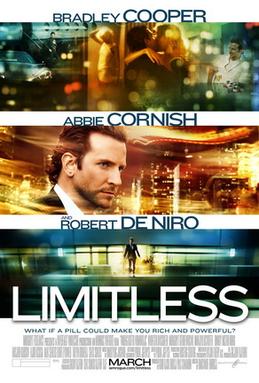Torodov's theory:
The film starts with an equilibrium (state of normality) then an obstruction happens which has to be overcome. The obstruction then leads to the film ending with a different equilibrium.
 |
| Diagram of Torodv's theory |
Roland Barthes:
He designed many codes. The most important three are:
- Symbolic: Something that represents something else.
- Action: The actions that happen in a film.
- Enigma: The questions the film makes you ask yourself.
Vladimir Propp:
He made observations about they type of characters always included in narrative. This includes things like: heroes, helpers and villains.
Levi-Strauss:
He produced 'Binary oppositions' which are that opposites are funny and always come up in films. Opposites can be things like: good vs bad or Male vs Female.
Applying narrative theory:
 |
| Limitless film poster |
Torodov's theory is clear to see in Limitless as at the start as Eddie (Bradely Cooper) is stuck in his repetitive life failing to be a successful novel writer.
The disruption of the equilibrium occurs when he meets his ex girlfriends brother, a drug dealer, who says he can give him a pill which will make him access 95% of his brain.
The recognition of the new equilibrium is when he starts his corrupt new life as a stock broker making thousands in just days relying on the pills.
He tries to repair the damage after a hitman targets him and his girlfriend to get the pills. He hires security and attempts to stop relying on the pills so heavily.
His new equilibrium can be seen as when he embarks on a new life as a member of congress. He rekindles his relationship with his girlfriend and takes on stock broking giant Van Loon.





